Fear of free thinkers | JUNE 17
On June 17, the Jewish Telegraphic Agency reports that in the last four days, the Nazi authorities have re-intensified their raids on cafés in Berlin and elsewhere in the country, which between June 13 and 17 have led to the arrests of 2,000 Jews. During the Weimar Republic, there had been a thriving Kaffeehauskultur—artists and intellectuals practically saw certain cafes as their homes, where they would spend half of their days and nights discussing art, literature, and politics. Under the Nazis, this phenomenon quickly disappeared; they suspected subversive activities among these free thinkers. The public sphere was infested with informers. By the time of the Juni-Aktion, in the context of which these raids were carried out, the original clientele had largely disappeared. Ostensibly, the raids were targeting “anti-social elements.” In fact, however, they constituted the first mass-arrest of Jews. The Minister of Propaganda, Joseph Gobbels, had summarized the intention with the pithy words: “Our password is chicanery, not the law.”
Clutching at straws | JUNE 16
Erika Langstein was a young English teacher living in Vienna. In June 1938, having experienced the persecution of Jews in the Austrian capital for several months already, Erika sent a letter to Donald Biever, an American citizen, imploring him to help her and her Jewish father flee Austria by issuing an affidavit for them. Nothing would be unusual about this, except for the fact that the young woman had met Biever just once, briefly, on a train ride a year earlier, and had not communicated with him since. Despite the tenuous nature of their relationship, Erika describes to Biever the hopeless of the situation in Vienna. She also attaches a photo, in case Biever does not remember their encounter.
Case by case | JUNE 15
Under the impact of the Nazi rise to power and increasing antisemitism in Europe, the great Yiddish writer and cultural activist Melekh Ravitch had had the foresight to raise the funds for a trip from his native Poland to Australia as soon as 1933 in order to scout the inhospitable Kimberley region as a possible place for Jewish settlement. His optimistic conclusion was that the challenges of the Outback could be tackled with “mer vaser, veyniker bir”—“more water, less beer.” By 1938, the territorialist Frayland Lige also began to look into the possibility. As per the Jewish Telegraphic Agency’s report on June 15, the government was willing to consider individual cases of Jews wishing to immigrate but was not willing to support Jewish mass settlement in the country.
Marked | JUNE 14
Despite the patriotism often espoused by German Jews and their manifold contributions to society, the Reichsbürgergesetz (“Reich Citizen Law”) of 1935 officially assigned an inferior status to Jews, declaring them to be mere “nationals” and further segregating them from the rest of the population. Over time, supplementary decrees were issued that provided the exact Nazi definition of what made a person a Jew and forced Jewish public servants into retirement. On June 14, 1938, the third such supplementary decree stipulated that Jewish-owned businesses were to be marked as such.
Fire sale | JUNE 13
The Jewish community of Eisenstadt in the Burgenland region of Austria had never been a large one, but as the oldest Jewish community in the area, it dated back to the 14th century and had a rich cultural life. The moment Austria was annexed by Nazi Germany on March 12, 1938, Jews were vulnerable. Under the deeply racist Gauleiter Tobias Portschy, the Burgenland was the first part of Austria to expel its Jewish population. In June 1938, Hilde Schlesinger Schiff was in Eisenstadt helping her parents get ready to relocate. In a birthday letter to her daughter Elisabeth, Hilde calls Elisabeth “a true Jewish child, not settled, always ready to be on the move,” in contrast with her own emotional connectedness to Eisenstadt, from which she is now forced to uproot herself. Mrs. Schlesinger Schiff writes that she hopes her parents will soon be allowed to immigrate to Czechoslovakia, but bureaucratic hurdles remain. Meanwhile, she is clearly taken aback by the eagerness of non-Jews to snatch up the family’s property at a low price, calling it “grave robbery.”
Anne knows better | JUNE 12
Leaving behind an increasingly antisemitic Germany, the Frank family of Frankfurt am Main fled to the Netherlands shortly after the Nazis rose to power. They settled on Merwedeplein in Amsterdam’s River Quarter, where more and more German-speaking immigrants were finding refuge. So large was the influx of Jews that some in the Dutch Jewish community were worried it would affect their standing in society and cause antisemitism. The Franks’ older daughter, Margot, went to school on Jekerstraat. Anne attended the Sixth Montessori School, a mere 5 minutes away from the family home. Fifteen of her classmates were Jewish. She loved telling and writing stories. Anne was curious, demanding, interested and very articulate. As her good friend Hanneli Goslar’s mother would say, “God knows everything, but Anne knows better.” In 1938, Anne’s father, Otto, applied for immigration visas to the United States. June 12 was her 9th birthday.
An absurd privilege | JUNE 11
The family of Therese Wiedmann (née Toffler) in Vienna was secular and very well integrated. While the Tofflers were keenly aware of the situation in Germany, no one among Therese’s relatives foresaw that so many Austrians would be so quick to welcome Hitler and abandon Austrian independence. After the “Anschluss” in March 1938 she immediately lost her job with Tiller AG. Her grandfather, until recently the president of the company, was no longer permitted to enter his office. Her father, Emil, the executive manager, was kept around for the time being, in order to familiarize the new, “Aryan” management with the company’s operations. Luckily, he had transferred part of his assets to England before the “Anschluss.” In better days, the company was deemed sufficiently Austrian to be appointed a purveyor to the royal-imperial court, for which it produced army uniforms. This passport, issued to Therese Wiedmann on June 11, 1938, contains a visa that includes “all countries of the earth” and “return to the German Reich.”
Without warning | JUNE 10
Ostensibly for traffic-related reasons, the city of Munich informed the Jewish Religious Community on June 8 that it was to sell the magnificent, centrally located Main Synagogue and the lot on which it stood for a fraction of its actual value. On June 9, the demolition of the building, which for little more than 50 years had served as the spiritual and cultural center of the Jewish Community, began. According to this June 10 report by the Jewish Telegraphic Agency, Chancellor Hitler had personally ordered the removal of the “eyesore.” Rabbi Baerwald, the spiritual leader of the community, received no more than a few hours advance warning in order to salvage the community’s most sacred objects. The recently acquired organ was passed on to a newly-built Catholic church. The loss of this building that had once been a symbol of pride, permanence, and belonging, was devastating to the Jewish Community of Munich.
Stölpchensee | JUNE 9
In 1935, the Nazi party press had orchestrated a campaign to exclude Jews from public swimming pools, citing “unpleasant incidents” or warning the public of the “danger” allegedly posed by Jews. Suddenly, signs inscribed with texts like “Jews are not permitted access to this facility” were put up almost everywhere. Stölpchensee, one of the lakes just outside Berlin, was the last public bathing spot to which Berlin Jews had access. Fritz and Friedel F. were married and lived in Berlin, where Fritz owned a lamp store. In June of 1938, their weekend cottage at Stölpchensee was still a family escape from the city and harassment.
You never write, you never call… | JUNE 8
Hans Joseph Pinkus was a direct descendant of Samuel Fränkel, founder of a textile factory in Neustadt (Upper Silesia), which for a while was the primary employer in the entire region and one of the world’s foremost producers of linens. His grandfather, Max, had been a personal friend and patron of the Nobel Prize-winning author Gerhart Hauptmann. His great-uncle, the scientist Paul Ehrlich, had been a Nobel laureate, too. Lili, Hans Joseph’s stepmother, was hardly intimidated by this pedigree. In this letter, written on June 8, 1938, she gives him a major dressing down for having neglected his correspondence with his parents and sternly inquires whether he flunked his exam in the Czech language. At this point, 16 year-old “Pipo,” as the family called him, was staying with his step-grandmother in Brünn (Brno, Czechoslovakia) and attending school there. His parents and half-sisters lived in Neustadt: the directorship of the the S. Fränkel company had been handed down to male members of the Pinkus family for several generations and was now held by his father, Hans Hubert.
Unbearable despair | JUNE 7
The Anschluss, Austria’s annexation by Nazi Germany in March 1938, precipitated a wave of anti-Jewish violence. Emboldened by their new status and by the utter defenselessness of the Jewish population, Nazis and their sympathizers entered Jewish homes and seized whatever property they liked. Jewish-run businesses were ransacked or destroyed, and Jews of all ages were forced to carry out the demeaning task of scrubbing streets to remove political slogans under the eyes of jeering onlookers. With no protection to be expected from police, a feeling of utter abandonment and hopelessness drove many Jews to take their own lives. In the first two months after the Anschluss, 218 Jews escaped the state-sanctioned cruelty by taking their own lives. The JTA’s June 7 dispatch lists the most recent suicides—including that of a family of four—and deaths at the Dachau concentration camp.
Universal humanity | JUNE 6
In his “Remarks about the Feast of Weeks,” published in the June issue of the “Jewish Community Paper for the Rhenish Palatinate Region,” Rabbi Dr. Ernst Steckelmacher of Ludwigshafen poses a real challenge to his readers. He interprets the Book of Ruth, one of the readings during the Feast of Weeks, as an example of Judaism’s emphasis on the precedence of the universal over the particular. Through Ruth, who embodies universal humanity, the book shows that goodness can be found anywhere. This was not an intuitive message at a time when the ostracism of Jews from German society forced them to turn inward. June 6, 1938, was not only the second day of Shavuot, but also the 80th birthday of Claude G. Montefiore, the President of the World Union of Progressive Judaism. Dr. Steckelmacher acknowledges this occasion and reinforces his universalist message by drawing attention to the similar sentiments of Claude Montefiore.
Jewish schools | JUNE 5
For many Jewish children, going to public school turned into hell under the Nazis. Just getting there could mean running a gauntlet of anti-Jewish slights. At school, exclusion by fellow students and teachers was the rule. In order to spare their children this ordeal, parents who could afford it sent their children to Jewish schools. Before 1933, most assimilated German Jews attended public schools. However, in the hostile climate of the Nazi regime attendance at Jewish schools grew. Dr. Elieser L. Ehrmann, a pedagogue and employee of the school department of the Reich Representation of Jews in Germany had developed curricula for teachers at Jewish schools which aimed to deepen the knowledge of Jewish holidays and the customs accompanying them and thus instill a positive Jewish identity. The excerpt shown here is from Ehrmann’s “Curriculum for the Omer and Shavuot [Feast of Weeks],” published in 1938 by the Reich Representation of Jews in Germany. That year, the first day of Shavuot fell on June 5.
Lifesaver | JUNE 4
Close to 50 years before issuing an affidavit of support for his nephew, Karl Grosser, in Vienna, Frank W. Fenner had himself immigrated to the United States from Europe. A restaurant and confectionery owner in Mendon, Michigan, he pledged to support his young relative until the 26-year-old became financially independent. Finding a sponsor was a key prerequisite for obtaining an immigration visa that was often hard to fulfill. The visa process began by registering with the nearest US consulate, at which point a number on the waiting list was assigned. The length of the list depended on the number of Jews from a given country allowed to enter the US according to the quota system that had been in place since 1924. Despite the severe refugee crisis, quotas were not raised in 1938. During the waiting period, applicants had to procure all the required documents as well as certified copies. Prospective immigrants were lucky if their documents were still valid when their numbers came up.
Left in the dark | JUNE 3
Nobody saw fit to inform the worried wives of thousands of Jewish men arrested by the Nazis about their spouses’ whereabouts and the expected period of imprisonment. Many of them decided to go to the Rossauer Lände detention facility and the central police station in order to get information on the whereabouts of their loved ones. According to this June 3 report from the Jewish Telegraphic Agency, the detainees had been taken away in overcrowded railroad cars, many of them forced to remain in uncomfortable positions for up to five hours before departure. While there were intimations that those sent to the Dachau concentration camp in Germany would be exploited as construction workers in order to enlarge the camp and subsequently be released, many had no idea where their husbands were. The author of the report sees the “extraordinary callousness with which police have withheld information” as “one of the most terrifying aspects of the situation.”
No Jews allowed | JUNE 2
In 19th century, the Central Association of German Citizens of Jewish Faith began to publish lists of spas and hotels at which Jewish guests were not welcome. Some resorts even advertised themselves as judenfrei (“free of Jews”). After World War I, the phenomenon known as Bäder-Antisemitismus (“spa antisemitism”) increased, and with the Nazi rise to power in 1933, it became official policy. By 1935, Jews had been effectively banned from the Northern German bathing resorts, and from spas in the interior of the country by 1937. It was not until the Anschluss in March 1938 that Jews were pushed out of Austrian spas as well. Bad Ischl and other locations in the Salzkammergut region were particularly popular with Jews, to the point that in 1922, the Austrian-Jewish writer Hugo Bettauer quipped that “it caused a stir when people suspected of being Aryans showed up.” In a notice from June 2, The Jewish Telegraphic Agency reports that at the behest of the Nazi commissioner in charge, Jews were to be “segregated in Jewish hotels and pensions” and were no longer permitted to attend cultural events in Bad Ischl.
Gestapo in the house | JUNE 1
Her paintings were political accusations and constituted a threat to the Nazi regime. Lea Grundig, born in 1903 as Lina Langer, was arrested with her husband, Hans, by the Dresden Gestapo on June 1, 1938, and not for the first time. The explanation given on the form was “Suspicion of subversive activity.” What was meant was her art. With picture cycles like “Under the Swastika” or “It’s the Jew’s Fault,” Grundig, who since 1933 had been barred from her profession, hauntingly documented the brutality of the persecution of Jews and communists by the Nazis. In 1935, she gave one of her paintings the portentous title, “The Gestapo in the house.”
Soldier, pacifist, cabaret artist | MAY 24
After three decades of making his fellow Austrians laugh, cabaret artist Fritz Grünbaum’s career was brought to an abrupt end by the Anschluss. His politics alone would have sufficed to make him intolerable for the new regime: Grünbaum had returned from action in World War I not only a decorated soldier but also an avowed pacifist. As for Nazism, he did not mince words. Since 1933, he had been getting more political, and when during a 1938 performance a power outage caused the stage lights to go out, he commented glibly, “I see nothing, absolutely nothing. I must have accidentally gotten myself into National Socialist culture.” His last performance at the famous cabaret “Simpl” in Vienna just two days before the Anschluss was followed by an artistic ban on Jews. Grünbaum and his wife Lilly, a niece of Theodor Herzl, tried to flee to Czechoslovakia but were turned back at the border. On May 24, he was interned at the Dachau concentration camp. Grünbaum was also known as a serious art collector, mostly of modernist Austrian works, and a librettist.
Opening night | MAY 14
On May 14, 1938, American moviegoers lined up to see Errol Flynn in his latest swashbuckling adventure produced by Warner Brothers. Flynn’s turn as Robin Hood was especially thrilling thanks to the lush film score by an Austrian Jew whose music was no longer welcome at home. Although a citizen and resident of Austria, composer and conductor Erich Wolfgang Korngold felt the effects of Nazi cultural policy soon after 1933, since he had often worked in Germany. In this climate, he did not have to think twice about Max Reinhardt’s invitation in 1934 to compose the score for his Hollywood production of “A Midsummer Night’s Dream.” Korngold’s symphonic film scores broke new ground and established the typical “Hollywood sound.” In 1937, while on an extensive visit to Vienna to complete the orchestration of his opera “Die Kathrin,” he received an invitation from Warner Brothers to compose the score for “The Adventures of Robin Hood.” This assignment spared him the turmoil of the Anschluss. He returned to the US well before March 12, 1938. This photograph shows what appears to be a recording session for the Robin Hood score. The actor in the photograph is Basil Rathbone, who played Robin Hood’s nemesis, Sir Guy of Gisbourne. Korngold won an Academy Award for his compelling score—his second after “Anthony Adverse” (1937).
Monetary hurdles | MAY 4
Before Martha Kaphan could travel to Mandatory Palestine, she had to deposit the considerable amount of 800 Reichsmark at the Dresdner Bank. The Reich Office of Foreign Exchange Control, which played a major role in the exploitation of Jewish emigrants, demanded the sum for the issuance of her tourist visa. Thousands of Jews tried to enter Palestine illegally by means of tourist visas with the intention of applying for permanent visas later. Apparently, Martha Kaphan did not emigrate for long. The British Consulate confirmed her departure on December 24, 1938. The deposit was paid on December 29, 1938 in Breslau, and the account was closed on January 10, 1939.
Our name should perish with us | APRIL 24
The diary of Dr. Hertha Nathorff (née Einstein) paints a vivid and at times nightmarish picture of the Jewish physician’s experiences in Nazi Germany. On April 24, she describes a visit with her parents in her native Laupheim in Swabia. Many Jewish shops had been sold, and their owners had emigrated. The Nazis’ efforts to malign and isolate the Jews had been so successful that passers-by were afraid to greet her. Her father had informed her that he was not going to sell the company which had been in the family’s possession for four generations and that he would prefer that it perish along with their name. The degree of isolation experienced by German Jews at the time is also evident in another episode mentioned in the diary: Dr. Nathorff is amazed at the fact that her former professor had the courage to send her regards through a patient.
Persecution in Austria, release from Dachau | APRIL 14
Little more than a month after the Nazi takeover of Austria, a cascade of new regulations and actions taken by the new regime leaves little room for optimism. The Jewish Telegraphic Agency reports for April 14 from Vienna that Jews within 50 kilometers of the Czechoslovak border are to be expelled. Nazi commissars will be put in charge of Austrian businesses at the latter’s expense. According to the JTA, in the case of hundreds of Jewish-owned businesses, this provision has already been enforced. Finally, a law has been introduced establishing new procedures for determining the racial status of illegitimate children. The one positive item in this substantial dispatch is the prospect that all Jews currently interned at the Dachau concentration camp will not only be released but will also receive permits to enter Palestine.
Hope for US leadership | APRIL 4
On April 4, 1938, Arthur Sweetser, a member of the Secretariat of the League of Nations, met with US President Franklin D. Roosevelt. During the meeting, the two discussed the situation of German and Austrian Jews urgently seeking ways to emigrate. Roosevelt brought up the idea of an international conference. His reasoning was simple: only under determined US leadership could the problem be solved and other nations be convinced to take in Jewish refugees. It remains disputed whether the idea of a joint debate on the situation of the Jews under the Nazi regime came from Roosevelt himself or rather from high-ranking State Department officials.
An ordinary eulogy in a time of immeasurable loss | MARCH 24
A mere 20 years had passed since the end of World War I, during which Dr. Max Kirschner, a Frankfurt physician, had been decorated with the Iron Cross—remarkably, for extending aid to enemy infantrymen. Yet the fact that Kirschner had fought in the War as one of 100,000 German Jews, 12,000 of whom lost their lives, did not in the long run improve his standing with the authorities. In his eulogy for Hedwig Wallach, scion of an old Frankfurt family, he praised the deceased’s quiet devotion to her husband, her lively interest in her children and the quiet bravery with which she had borne her illness.
A taste of home | MARCH 14
After the tribulations of their forced emigration, often accompanied by a loss of status, property, and basic faith in humanity, German Jews might not have been expected to feel particularly nostalgic for their former home. This ad from the Aufbau, the New York-based German-Jewish paper published by the German-Jewish Club, shows that nevertheless, Jewish refugees from Nazi Germany were not necessarily in a hurry to give up their eating habits.
Parochet, dark-blue | MARCH 4
This dark blue parochet (curtain for covering the Torah Ark in a synagogue) is part of the collection of the Israelitisches Blindeninstitut (Jewish Institute for the Blind) in Vienna. The institution was established in 1871 with the purpose of educating blind Jewish students. Professions taught ranged from manual occupations to translating and interpreting. Due to its excellent reputation, the school attracted students not only from Austria, but also from most other European countries. March 4 was one of its last days of undisturbed activity.
“Degenerate” | FEBRUARY 24
In the traveling exhibition “Degenerate Art,” initiated in Munich in 1937, the Nazis used 650 works of art confiscated from 32 museums in order to force their idea of art upon the populace: newer trends like expressionism, surrealism, or fauvism, to name just a few, were regarded as “Jewish-Bolshevist” and roundly disparaged. The front page of the exhibition catalog shows a piece titled “Large Head” from the workshop of the German-Jewish artist Otto Freundlich, one of the first exponents of abstract art. It was created in 1912 to symbolize hope for a new beginning. Even apart from Freundlich’s Jewish background and his artistic leanings, being a communist made him politically unacceptable in the eyes of the regime.
Kibbutz Giv’at Brenner | FEBRUARY 14
Kibbutz Giv’at Brenner was established in 1928 by young immigrants from Poland and Lithuania who were soon joined by a group from Germany. As in many other kibbutzim, conditions at Giv’at Brenner were initially harsh, causing some members to leave. In the 1930s, due to the absorption of new immigrants, the kibbutz grew. Over time, a thriving agriculture and various industrial enterprises, including a cannery and a factory for irrigation equipment developed. The picture presented here shows the carpentry shop of the kibbutz in 1938. A unique feature was Beit Yesha, a vegetarian convalescent home established in the mid thirties—the first of its kind in a kibbutz.
Atmosphere of hopelessness | FEBRUARY 4
“May you continue for a long time to be granted the opportunity to dedicate your tried and tested skills to the welfare and benefit of the city.” With these words, Berlin mayor Heinrich Sahm congratulated Prof. Erich Seligmann, Director of Scientific Institutes at the Public Health Department and an eminent authority on issues of public health, on his 25th year of service in 1932. Barely half a year later, in March 1933, Seligmann was dismissed, despite his recognized scientific achievements and his outstanding knowledge in the field of epidemics control, which he had demonstrated inter alia as a staff surgeon in World War I. In this diary entry dated February 4, 1938, Seligmann writes about “widespread confiscation of passports from Jews” and “an atmosphere of hopelessness.” Seligmann was planning a trip to Rome, where he and his wife Elsa hoped to meet their son Rolf.
The Fifth Column | JANUARY 24
In the 78th and last year of its existence, the orthodox weekly Der Israelit reports on measures of the anti-semitic, pro-German Goga-Cuza government in Romania: The country’s Jews were subjected to various chicaneries and occupational bans similar to those in Germany. As a result of gains in territory and population in WWI, about 30% of Romanians belonged to minority groups, who were seen as a “Fifth Column.” Jews especially were the object of fears and suspicions which easily turned into violent hatred.
Staged normalcy | JANUARY 14
The January issue of the Berlin Kulturbund magazine conveys a sense of normalcy—local businesses advertise merchandise and services like cosmetics, women’s apparel and car repairs, while the Kulturbund schedule offers Eugene Scribe’s “The Ladies’ Battle.” The comedy must have provided a welcome respite from the worrisome situation.

